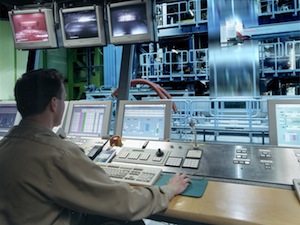The EU is the world’s second largest producer of crude steel:
[list_icon color=green type=icon_chartcicle]
- EU steel exports in 2010: 33.7 million tonnes (€32 billion)
- EU steel imports in 2010: 26.8 million tonnes (€18 billion)
- EU share of global steel exports (top ten exporters) in 2010: 14 %
- Biggest markets for EU steel exports in 2010 (in decreasing order of importance): Turkey, USA, Algeria, Switzerland, Russia, India.
[/list_icon]
Steel is the most commonly-used material in the world, with an annual production of around 1.4 billion tonnes (2010). Its resiliency, flexibility and reusability make it the single most useful basic industrial material on earth.
The increase in global steel production in 2010 after heavy contraction in 2009 was higher than expected with an increase of 15% compared to 2009 and a new record for global crude steel production.. The EU remained the second world steel producer with 173 million tonnes of crude steel produced in 2010, an increase of +24.6% compared to 2009. China was the world’s largest producer with 626 million tonnes (45% of world production), followed in third place by Japan with 109 million tonnes, the USA with 81 million tonnes and Russia with 67 million tonnes. The steel sector in the EU accounts for 1.4% of GDP. After rather stable production at around 200 million tonnes per year, the sector has been hit hard by the economic crises since the end of 2008. The crude steel production in the EU fell sharply in 2009 (-30%). The EU steel sector started to recover in mid-2009 as the overall economic conditions gradually improved. The recovery continued during 2010, one of the key drivers being the improvement in international trade.
Employment in the steel sector has contracted steadily in recent decades from 1 million people working in the sector in 1970, to around 408 000 employed in the sector in 2008. The number of Europeans working in downstream industries dependent on domestically produced or imported steel, is in the range of millions.
The EU steel imports fell by about 50% from 40.2 million tonnes in 2008 to 20.7 million tonnes in 2009. In comparison, the steel exports from the EU only fell by 11% from 35 million tonnes in 2008 to 31 million tonnes in 2009, thus turning the EU steel trade balance to surplus after several years of deficit. In 2010 this surplus halved when imports grew by 30% to almost 27 million tonnes and exports increased only by 5% to 33.7 million tonnes in total.
Russia was the largest exporter to the EU in 2010 with over 6.5 million tonnes, which represented 24% of total EU steel imports. During 2010, imports from China increased again after a significant drop in 2009. China moved to third import source position with 3.6 million tonnes in 2010, after Russia and Ukraine (5.7 million tonnes). Turkey held the fourth place (1.8 million tonnes) followed by South Korea, Switzerland and Serbia that all exported over 1 million tonnes to the EU.
Following a ‘zero-for zero’ agreement negotiated during the Uruguay WTO world trade negotiations, the EU has reduced its import duties for most steel products to 0%.
For steel producers who are not members of the WTO the EU operates a system of annual import quotas that govern the overall levels of steel imports from these countries to the EU. For Kazakhstan, these quotas amount to 0.2 million tonnes a year. For Russia, they are implemented as part of an EU-Russia agreement and amount to 3.2 million tonnes. These quotas will lapse when these countries join the WTO.
